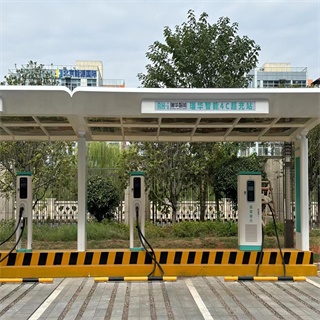What is a level 3 electric car charger?
As the electric vehicle (EV) ecosystem continues to evolve, various types of EV charging stations have emerged, including Level 3 electric car charger. Level 3 electric car chargers, also known as DC fast chargers, offer much higher charging speeds compared to Level 2, making them ideal for locations with high charging demand such as commercial properties, public parking lots, and highway rest areas.
For multifamily and commercial properties considering Level 3 electric car chargers, several factors need to be considered. These include installation requirements, maintenance costs, and compatibility with existing electrical infrastructure. Additionally, it’s important to ensure that the chargers offer smart management features such as payment systems and usage analytics to enhance the user experience and optimize operational efficiency.
Power requirements
Level 3 electric car chargers require a 480-volt electrical source, commonly used to power industrial motors and heating applications. In contrast, Level 2 electric car chargers need a 240-volt source, similar to that of an oven range or clothes dryer. For reference, a standard wall outlet provides only 120 volts.
When selecting Level 3 electric car chargers for a property, it’s important to assess the power available to ensure the installation is both effective and safe. Property owners and managers must ensure that the electrical infrastructure can support the high voltage required by Level 3 chargers. This consideration will help deliver reliable charging solutions while avoiding potential safety issues and ensuring compliance with local electrical codes. By understanding the power requirements, owners can better plan for the integration of Level 3 chargers and meet the growing demand for fast EV charging in their communities.

Physical specifications
When it comes to size, a Level 2 electric car charger is much smaller than a Level 3 electric car charger, which can weigh upwards of 500 pounds. Each charger is also equipped with varying plug types – a Level 2 electric car charger utilizes a J1772 plug, while a Level 3 electric car charger uses CCS and CHAdeMo plugs.
This highlights the differences in both size and plug compatibility between the two types of chargers. As properties consider installing Level 3 electric car chargers, it’s important to factor in not only the power requirements but also the physical space and infrastructure needed to accommodate these larger, heavier units.
Installation cost
It’s no surprise that there is a significant cost difference between EV chargers, with a Level 3 electric car charger potentially costing upwards of 200 times more than a Level 2 electric car charger. A property’s overall installation cost will vary by project and depend on factors like charger specs, labor, physical placement, mounting requirements, and any potential electrical upgrades that may be required.
Local rebate and incentive programs often cover both charger types, though details will vary by provider. When considering the installation of Level 3 electric car chargers, property owners should account for these higher upfront costs, as well as the potential long-term benefits of offering fast charging solutions to attract more tenants and customers.
Charging time
Drivers using a Level 2 electric car charger can typically expect to return to a fully charged car after a couple of hours. A Level 3 electric car charger, also known as Direct Current Fast Charging (DCFC), can deliver a full charge in approximately 30 minutes. These timeframes are estimates and will vary based on the car and battery type.
When considering a Level 3 electric car charger, property owners should keep in mind that the fast charging capabilities can significantly reduce wait times for users, making it an appealing option for locations where quick turnaround is crucial, such as commercial properties, rest areas, and high-traffic locations.
Use case
Level 2 electric car chargers are most commonly found in locations with longer dwell times, like multifamily communities and office buildings. These locations enable drivers to conveniently charge their EVs while doing something else for a couple of hours, such as relaxing at home or working during the day.
Level 3 electric car chargers, on the other hand, are often found along busy transportation corridors, serving drivers who are on the go and looking to get back on the road as quickly as possible. With their fast charging capabilities, Level 3 electric car chargers can also be an ideal solution for fleet operations and other enterprise needs, ensuring minimal downtime for vehicles that require quick recharging between
Partnering with RUIHUA
Successfully navigating these considerations will help property owners and managers determine which EV charging station works best for their building. In some cases, the right solution may be a combination of Level 2 and Level 3 electric car chargers.
Partnering with an expert provider like RUIHUA streamlines the process from beginning to end – we help properties design the most effective charger layout, take advantage of all rebates and incentives, handle all installation work, and manage and monitor the system 24/7. Whether you’re looking to install Level 3 electric car chargers along busy transportation corridors or Level 2 chargers in multifamily communities, we ensure that the solution meets your needs while providing long-term benefits. Reach out to learn more.
Finally
Level 3 electric car chargers, also known as DC fast chargers, offer rapid charging speeds, making them ideal for high-demand locations like commercial properties and highways. These chargers require a 480-volt power source and are larger and more expensive than Level 2 chargers. Despite the higher upfront costs, they provide significant long-term benefits, such as faster charging times and attracting more tenants. Partnering with RUIHUA ensures a seamless installation process, from design to 24/7 system management, tailored to your property’s needs.




